Some of us are fascinated by dreadlocks, some of us are afraid of them, some of us can’t wait to get ours and some simply find it dirty. Dreadlocks is historic hairstyle that has a lot of rumors around it plus it signifies the spirit of rebel for some as it was associated with countercultures or even a way of life or religion (like Indian Sadhus).
But whatever reason, that you got interested in reading about dreadlocks in the first place, you will find all the information you need here. We will clear out some myths as well along the way.
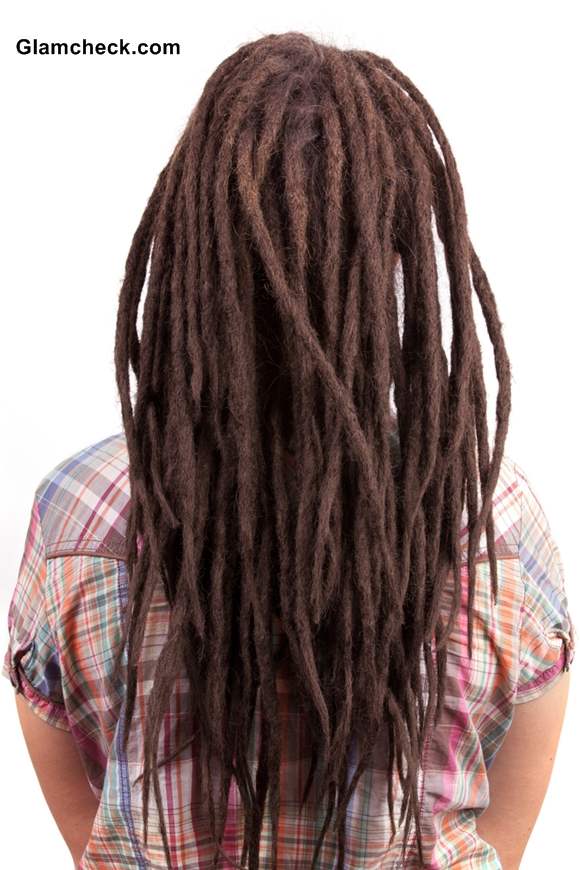 All About Dreadlocks
All About Dreadlocks
But first off, mostly dreadlocks are a longtime commitment. It can be achieved by many methods, some natural some require you to go to your salon. But don’t lose all hope if you don’t have the patience but need them as well, because we discuss some temporary methods as well.
Myths about Dreadlocks
Well there are many, let’s get started.
- Unlike the rumor, your hair does not have to be dirty when you are starting to dread. Quite the opposite, they need to washed from a residue-free shampoo (fragrance is a residue, or any other chemicals in the shampoo) without a conditioner to start dreading.
- You do not have to put hair gel, candle wax, toothpaste or any of those weird things that people say, into your hair to start dreading.
- The rumor is only people belonging to Africa (or similar) with their favorable hair texture, can have dreadlocks. Instead, people with even straight hair have had them, just needs more patience.
- If you get tired of your dreadlocks and want to get rid of them, you do not need to shave your head. You will have to go super short though, say 2”
Natural Methods to get Dreadlocks
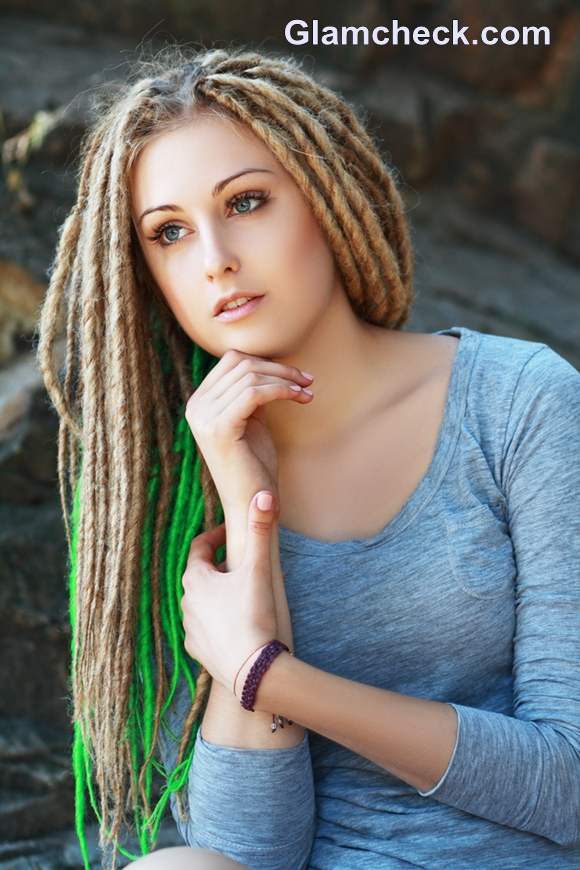 Natural Methods to get Dreadlocks
Natural Methods to get Dreadlocks
- Neglect: This is the most time consuming method wherein you stop combing your hair. Though you have to shampoo twice a week with a residue free product. You can rip your hair into dreads too, or use a rubber band to help but it will take years for your dreadlocks to form and mature this way. This will however, not give you even or rather nice-looking dreads.
- Backcombing: You might need the help of a friend in this one. 1”or 2” neat square sections of your hair are taken and back-combed using a dread comb, starting at the base and all the way to the tip. The dreads need to be backcombed to be very tight and rubbed in the palm producing some heat. You can take your tips between two fingers, rub it in circles on your palm and then fold and secure to get blunt ends. If you know crochet however, you can crochet hook the tips for being blunt.
This method too requires patience and your dreads will be standing upright and be fluffy for weeks, then at 3 months some tightening happens, at 6 they will be solid and look like dreads. In a year or two they will mature properly.
- Wool Sweater: A painful method but it can be done yourself. You prepare your residue free hair like always. Rub your sweater in circles and tangle it for 15 min. Then rip it into dreads. Repeat the rubbing again and rip again. Repeat until your hair is knotted.
Getting dreadlocks at the Salon
Not everybody will like to do their dreads themselves so you can get it done at the salon.
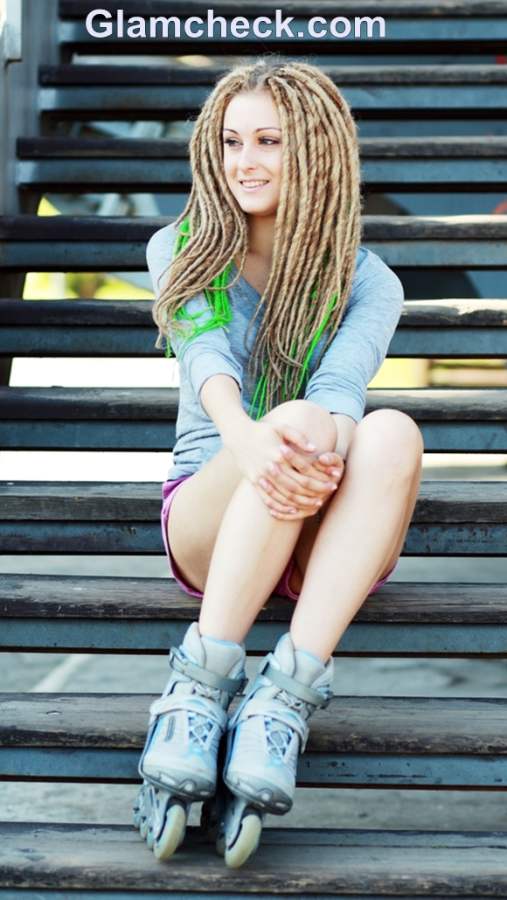 Getting dreadlocks at the Salon
Getting dreadlocks at the Salon
- Dread Perms: This method is pretty expensive at the salon and takes hours. The magic worker is the chemicals applied to frizz out your hair. Then the backcombing method above is used usually. After which the dreads are set by curlers or twisted according to the final look required. Then a chemical is applied to make the hair swell, when it re gains shape, it stays in a dread. In a few weeks time, they start to look like natural dreads. Because of the chemicals though, many a times it turns out harmful to the hair. Many recommend it. If you have to do it, be sure of what they will use in your hair as they sometimes even use glues of sorts.
- Twisting: This method is not the best for Caucasian or Asian hair but already textured African hair. Preparing the hair like the backcombing method, instead of backcombing they are snagged at the ends and twisted. Rubber bands or used to secure the new dreads and dread wax (it is better when without petroleum in it) keeps them together. Most salons will do this method for a lot cheaper than the above.
Temporary methods of getting dreadlocks
If long term commitment ain’t your thing these two methods are for you.
- Wool Dreads: Take some merino wool and a slippery soap water mixture in a spray bottle. Spray it over the approx 3” thick wool, place it on a bubble wrap and start rolling. You can add layers to make it thicker. Now put your dread in hot water (the hotter the better, but be sure that your hands don’t burn) Squeeze the water out, role once more on a towel this time. You can form a loop at the end of the dread by tying it with another wool strand or rubber band. Pass the loop through your natural hair and braid it to keep in place.
You can also make them double the length at once, fold and then braid it with your hair. You can use all crazy colors of wool if you like and also use this as an addition to your natural ones.
- Dreadlock Hairstyle: You can start by taking a square section from the back of your head. Separate it into three, and braid a little, then tease with your regular comb. Twist the dread and smoothen it slightly with a hair straightener. Apply a texturing wax on the dreadlock and then spray it with a good hair spray. Repeat for the rest of your hair. Don’t part the hair neatly and also towards the top of your head, braiding near the scalp will not be required.
Aftercare of your baby dreadlocks
- With a natural method if you have just formed the base for your dreads you can fasten the maturing process by taking good care.
- One of the things to remember is to not backcomb them again. Let them stay there in peace.
- You can apply non-petroleum hair wax or cream from time to time to help them dread.
- Wash your hair regularly with residual-free shampoo or soap.
- You can use rubber bands for your ends to blunt them but not very tight or else the pressure will thin the dread from that area. The tension should be just about enough.
Aftercare of your mature natural deadlocks
Mature dreadlocks are very easy to maintain and you have to do no more than shampoo it regularly with a dread shampoo. No cost of cutting your hair or maintaining them now.
Aftercare of your Salon Dreadlocks
- Dreadlocks done in a salon can require an appointment and maintenance sitting every six months, depending on your dreads and salon
- You may even be advised to use sea salt spray on them.
- But these too should be washed at a decent interval. If your salon advices not to wash them for long, you may want to reconsider the salon that you are choosing.
Hairstyles with your Mature Dreadlocks
Now, once you have mature dreadlocks from either of the methods above – first it is an achievement and you should be proud of it. Second, you still can do some very cool hairstyles with them.
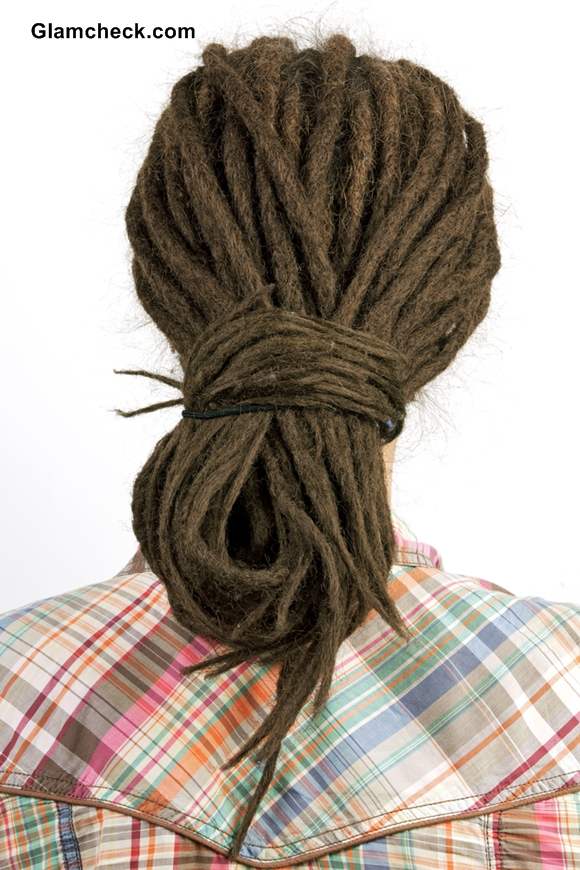 Hairstyles with Dreadlocks
Hairstyles with Dreadlocks
A quick hairstyle to neaten up your dreadlocks is to fold all of them in half from below the neck, saving a few in the side. Use this left out section to wrap around the folded dreads to get a bun-like style.
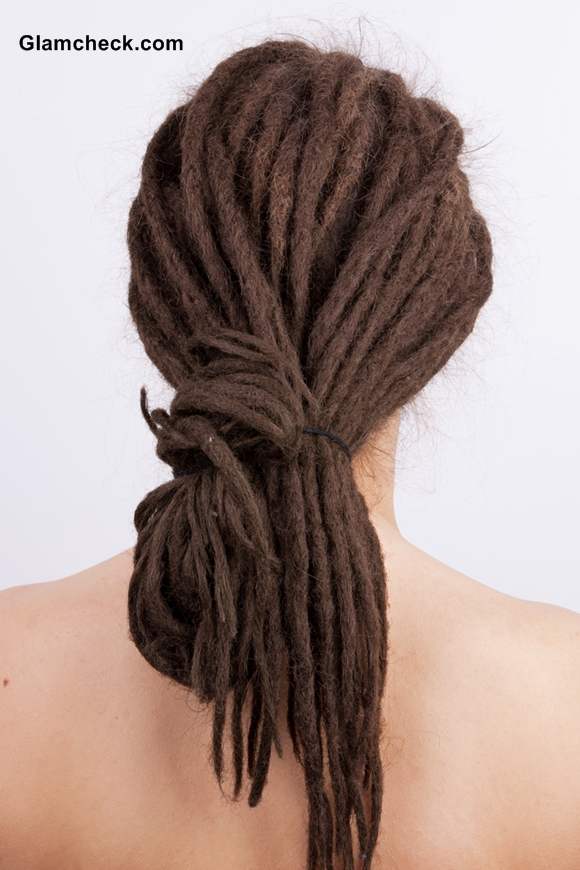 Dreadlocks Hairstyles
Dreadlocks Hairstyles
You can use a rubber band to tie your dreads as well but don’t put too much tension on it. Simply make a pony tail or let half of the hair to pass through and the other half folded with the band. This one is a very carefree looking hairstyle.
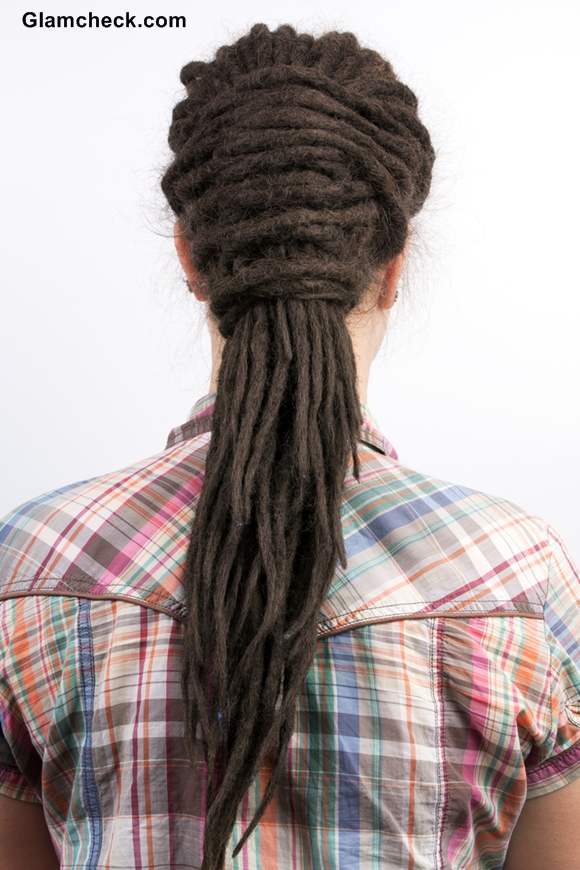 Dreadlocks Hairstyles styling
Dreadlocks Hairstyles styling
You can also tie a ponytail from most of your dreads only leaving a side section. Wrap that side section around the rubber band and ponytail.
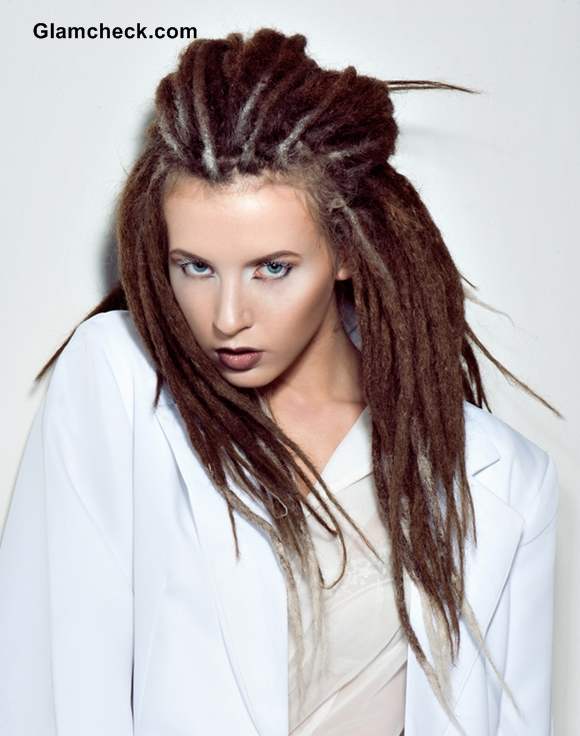 Dreadlock Hairstyles
Dreadlock Hairstyles
You can take the dread on the top your crown and tie them at the back leaving the rest of the dreads open. This can be the half-ponytail version of dreadlocks.
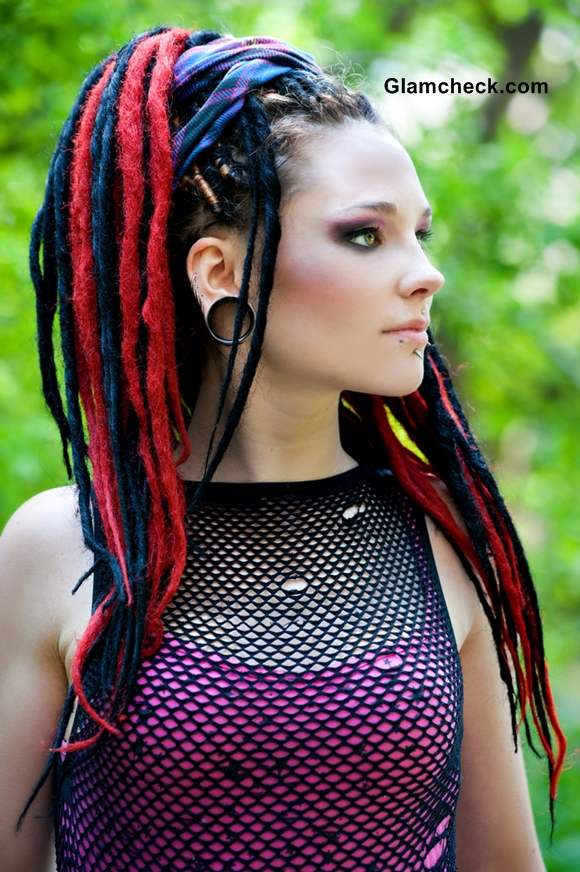 Dreadlock Hairstyle options
Dreadlock Hairstyle options
Alternately, you can also tie the dreadlocks with a scarf on your head worn like a hairband. Or make a bold statement by putting a flower in your dreadlocks!
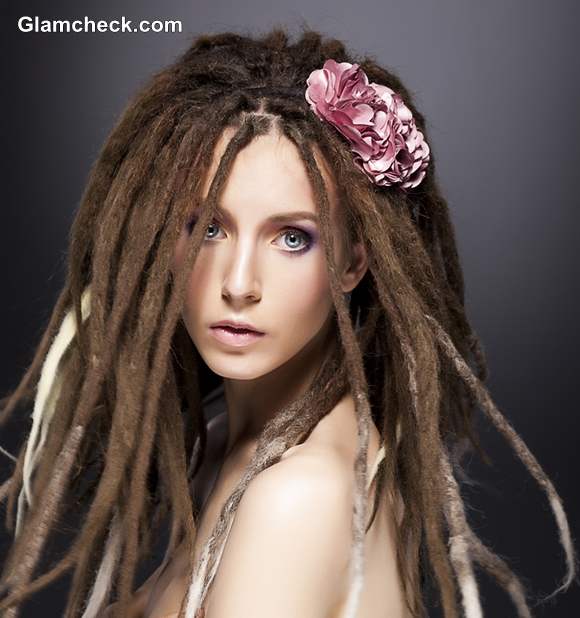 Dreadlock Hairstyle option
Dreadlock Hairstyle option
Enough said, now all we want to know about is – when do you embark upon your dreadlock journey?
Image: Shutterstock
